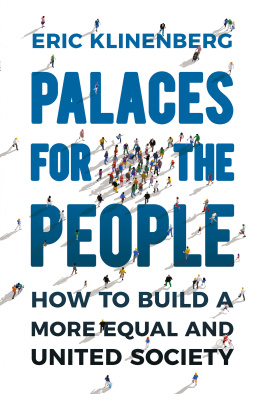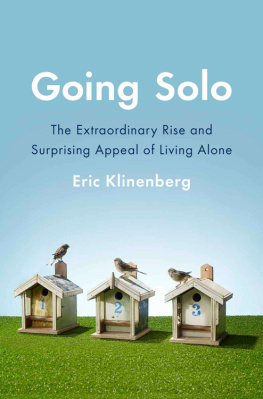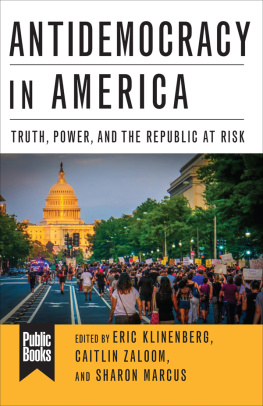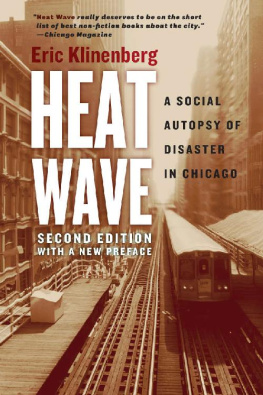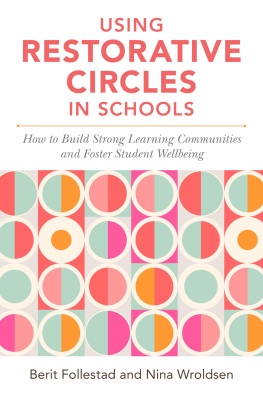CONTENTS

ABOUT THE BOOK
How can we bring people together? In Palaces for the People the sociologist and best-selling author Eric Klinenberg presents a simple but transformative idea for health, happiness, safety and healing our divided, unequal society.
Too often we take for granted and neglect our libraries, parks, markets, schools, playgrounds, gardens and communal spaces, but decades of research now shows that these places can have an extraordinary effect on our personal and collective wellbeing. Why? Because wherever people cross paths and linger, wherever we gather informally, strike up a conversation and get to know one another, relationships blossom and communities emerge and where communities are strong, people are safer and healthier, crime drops and commerce thrives, and peace, tolerance and stability take root.
Through uplifting human stories and an illuminating tour through the science of social connection, Palaces for the People shows that properly designing and maintaining this social infrastructure might be our single best strategy for a more equal and united society.
ABOUT THE AUTHOR
Eric Klinenberg is Professor of Sociology and Director of the Institute of Public Knowledge at New York University. His pioneering research into the power of social infrastructure led to his appointment in 2013 as Research Director for President Obamas $1 billion programme to rebuild the region affected by Superstorm Sandy. He is the multi-award winning author of several books including, as co-author, the recent number one bestseller Modern Romance.
For Lila and Cyrus
INTRODUCTION
The Social Infrastructure
On July 12, 1995, a tropical air mass with searing heat and high humidity settled over Chicago, making it feel like Jakarta or Kuala Lumpur. On July 13, the temperature hit 106 degrees and the heat index, which measures how a typical person experiences the weather, reached 126. Local newspapers and television stations announced that the heat wave could be dangerous, but they didnt recognize its severity. Along with basic health warnings and meteorological reports, they also ran humorous stories about how to ward off wardrobe wilt and makeup meltdown and shop for air conditioners. This is the kind of weather we pray for, said a spokesperson for one regional supplier. The Chicago Tribune advised readers to slow down and think cool thoughts.
Chicago broke its record for energy consumption that day, and the surge in demand overwhelmed the electrical grid, causing outages in more than two hundred thousand homes, some lasting for days. Water pumps failed, leaving units on high floors dry. Across the city, buildings baked like ovens, roads and railways buckled, thousands of cars and buses overheated. Children riding school buses to camp got stuck in gridlocked traffic and had to be hosed off by public health crews to avoid heat stroke. Despite the mounting problems, Chicagos city government neglected to declare a state of emergency. The mayor, along with leaders of several key city agencies, was out of the city, vacationing in a cooler spot. But millions of residents were stuck in the heat.
Like all cities, Chicago is a heat island, with paved roads and metallic buildings that attract the suns warmth and heavy pollution that traps it. While the verdant suburbs surrounding Chicago cooled down at night, urban neighborhoods continued to broil. So many people called 911 that paramedics had to put some of them on hold. Thousands rushed to emergency rooms with heat-related illnesses, and nearly half of the citys hospitals refused to admit new patients because they had no more space. A line of trucks formed outside the Cook County Medical Examiners Office, waiting to unload dead bodies. There were 222 bays at the morgue, all of them filled. The owner of a meatpacking company offered to bring a forty-eight-foot-long refrigerated truck. When it was fully loaded, he brought another, and another, until nine trucks holding hundreds of bodies were jammed into the parking lot. Ive never seen anything like this in my life, said the medical examiner. Were overwhelmed.
During the week between July 14 and July 20, 739 people in excess of the norm died in Chicago, roughly seven times the toll from Superstorm Sandy and more than twice as many as in the Great Chicago Fire. Before all the bodies had been buried, scientists began to look for patterns behind the deaths. The US Centers for Disease Control and Prevention (CDC) sent a team of researchers from Atlanta and recruited dozens more in Chicago to investigate. Interviewers visited the homes of more than 700 people, creating matched pairs of victims and surviving neighbors and compiling demographic information that they used for comparison. Some of the results were unsurprising: Having a working air conditioner reduced the risk of death by 80 percent. Social isolation increased the risk. Living alone was particularly dangerous, because people often fail to recognize the symptoms and the severity of heat-related illnesses. A close connection to another person, even to a pet, made people far more likely to survive.
But fascinating patterns did emerge. Women fared far better than men, because they have stronger ties to friends and family. Despite high levels of poverty, Latinos had an easier time than other ethnic groups in Chicago, simply because in Chicago they tend to live in crowded apartments and densely packed neighborhoods, places where dying alone is nearly impossible.
For the most part, heat wave mortality was strongly correlated with segregation and inequality: eight of the ten community areas with the highest death rates were virtually all African American, with pockets of concentrated poverty and violent crime. These were places where old or sick people were at risk of hunkering down at home and dying alone during the heat wave. At the same time, three of the ten neighborhoods with the lowest heat wave death rates were also poor, violent, and predominantly African American, while another was poor, violent, and predominantly Latino. On paper, these neighborhoods looked like they should have fared badly in the heat wave. In fact, they were more resilient than Chicagos most affluent areas. Why?
I grew up in Chicago, and when the heat wave hit I was about to move to California for graduate school. I had no plans to return to my home city. I hadnt thought much about neighborhoods, natural disasters, or the climate. But I couldnt stop thinking about the heat wave, and the puzzle of why some people and places that seemed fated for disaster managed to avoid it. Although I did move to California, I scrapped my plan to study the drug business and started digging into the disaster. I came back to Chicago whenever I could and eventually moved there to conduct fieldwork, turning my familys basement into an operations center and making the heat wave the subject of my dissertation.

